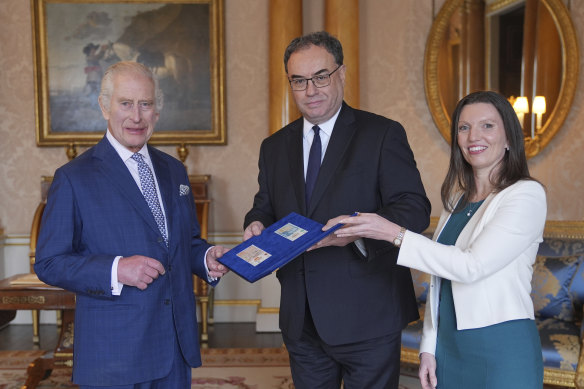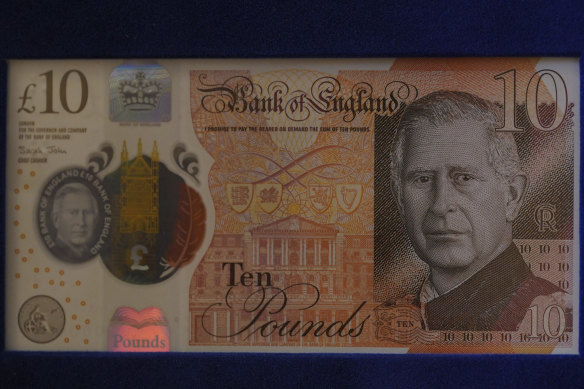
British banknotes featuring the portrait of King Charles will enter circulation on Wednesday, but they are likely to be rare for some time in everyday cash transactions.
The Bank of England said that new notes would only be printed to replace those depicting Queen Elizabeth II that are worn or to meet any rise in demand at a time when cash use is in decline.

King Charles was presented with the first banknotes featuring his portrait by Bank of England governor Andrew Bailey and chief cashier Sarah John in April.Credit: AP
The slow introduction by Britain’s central bank is to reduce the notes’ financial and environmental impact after guidance from the royal household. The King, 75, is well known as a champion for climate causes.
The Bank of England has not revealed how many notes depicting Charles will be issued in the initial print run, and says they will be introduced “very gradually”. It means Queen Elizabeth notes will co-circulate with the new notes and will remain the bulk of those being used in everyday cash transactions for some time.
The current batch of polymer banknotes started to enter circulation in 2016 and are made to give them a long lifespan. The Bank of England expects the £5 and £10 polymer notes to last at least five years, while the average lifespan of £20 notes could be more than 20 years due to how the public uses them.
Given the notes’ gradual introduction into circulation, the bank is offering people a temporary service allowing them to exchange their old notes.

A £10 banknote bearing a portrait of the King, which enters circulation on June 5.Credit: AP
Britons can send up to £300 in the post and receive new Charles banknotes, a service that will be offered until June 30. Alternatively, they can exchange up to £300 of notes at the Bank of England counter on Threadneedle Street in London until June 11. However, the central bank warned that long waiting times were possible.
The banknotes will also be available from a select group of Post Office branches before being rolled out to others in the coming weeks.



























